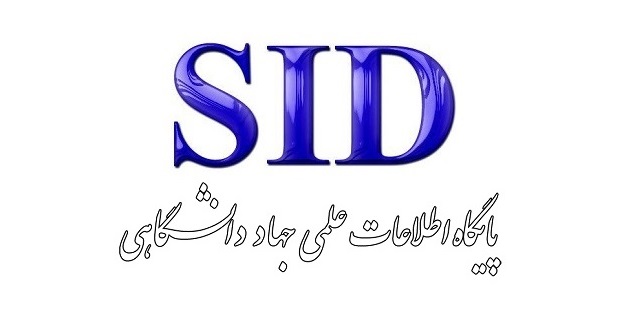Model Fit of Determinants of Corporate Financial Corruption in Iran and Proposed Solutions
Keywords:
Financial corruption, organizational culture, transparency, educational strategies, internal control, IranAbstract
Financial corruption has become one of the main challenges to economic and social development in developing countries, including Iran. This study aimed to identify the determinants of financial corruption in publicly listed companies in Iran and to propose appropriate preventive strategies. Using a mixed-methods design (qualitative and quantitative) and a grounded theory approach, key factors of financial corruption were identified, including causal conditions (such as individual motivations and weak internal controls), the core category (non-transparent organizational culture), contextual conditions (legal deficiencies and sanctions), intervening factors (perception of corruption and inefficient recruitment), and consequences (decline of public trust and investment). Data were collected through expert interviews and questionnaires administered to 329 certified public accountants in Iran and analyzed using SPSS and LISREL software. The results indicated that a non-transparent organizational culture plays a central role in perpetuating financial corruption, and that educational strategies (e.g., ethics training) and monitoring strategies (e.g., strengthening internal controls) with a high correlation coefficient (0.69) can help reduce corruption. These findings are consistent with global studies, such as those of the Organisation for Economic Co-operation and Development (OECD, 2020). Practical recommendations include developing continuous training programs, enhancing monitoring systems with modern technologies, and reforming financial regulations. This research provides a comprehensive framework for policymaking to reduce financial corruption and improve transparency and economic efficiency.
References
J. Johnson and S. Sharma, "Corruption, governance, and economic growth: Evidence from cross-country data," World Development, vol. 153, p. 105783, 2022, doi: 10.1016/j.worlddev.2022.105783.
D. A. Kulmie, M. D. Hilif, and M. Sheikh Hussein, "Socioeconomic Consequences of Corruption and Financial Crimes," International Journal of Economics and Financial Issues, vol. 13, no. 5, pp. 88-95, 2023, doi: 10.32479/ijefi.14714.
S. Lin, Y. Ma, and C. Su, "The impact of institutional quality on corporate corruption: Evidence from emerging markets," Journal of Business Ethics, vol. 172, no. 3, pp. 537-552, 2021, doi: 10.1007/s10551-020-04521-6.
Y. Wang and Y. Huang, "Institutional determinants of corruption: A cross-country analysis," International Review of Economics & Finance, vol. 66, pp. 154-171, 2020, doi: 10.1016/j.iref.2019.11.004.
M. Pahlavani, "Macroeconomic Factors and Financial Corruption in Iranian Companies," Quarterly Journal of Economic Policies, vol. 10, no. 4, pp. 55-70, 2022.
H. Padash and A. Arbab, "Combating financial corruption in the Middle East: The role of transparency and technology," Middle East Economic Review, vol. 14, no. 1, pp. 25-40, 2022.
H. Gholami, "Policies to Combat Financial Corruption in Iran: Challenges and Solutions," Quarterly Journal of Economic Policies, vol. 10, no. 2, pp. 15-30, 2022.
M. Noorbakhsh, S. Asadi, and S. Mirzaei, "Explaining the Institutional and Structural Dimensions of Financial Corruption with a Grounded Theory Approach: A Study of the Iranian Insurance Industry," Quarterly Journal of Financial Development Strategies, vol. 8, no. 2, pp. 105-132, 2020.
M. Fadavi, "Cultural and Social Factors in Financial Corruption: A Case Study of Iranian Companies," Quarterly Journal of Economic Sociology, vol. 9, no. 3, pp. 15-30, 2021.
J. Tabiyanian, "Organizational and Managerial Factors Affecting Financial Administrative Corruption in Public Organizations," Management and E-Commerce, pp. 122-141, 2022.
S. F. Masoumi and M. Hekmati, "Organizational Transparency for Preventing Administrative and Financial Corruption (Case Study: Hamadan Municipality)," New Research Approaches in Management and Accounting Sciences, vol. 8, no. 28, pp. 2383-2397, 2024.
M. Kalantari, "Investigating Institutional Factors in the Formation of Financial Corruption in Iranian Companies," Quarterly Journal of Economics and Management, vol. 7, no. 1, pp. 30-45, 2019.
S. S. Mostafavi Nejad, K. Parvin, and O. Naeimi, "Combating Financial Corruption: Diagnosing the Jurisdiction of the Administrative Court of Justice and the General Inspection Organization," Administrative Law Quarterly, vol. 10, no. 33, pp. 195-218, 2023, doi: 10.61186/qjal.10.33.195.
S. Darwish, "Iraq's Administrative and Financial Corruption: A Perspective," Open Journal of Business and Management, vol. 11, no. 6DO - 10.4236/ojbm.2023.116151, 2023. [Online]. Available: https://www.scirp.org/journal/paperinformation?paperid=128669.
S. Chapushi-Shaqaqi, P. Khodabakhshi, and Honarmandi, "Identifying and Evaluating the Weaknesses of the Inspection and Audit System in Preventing Administrative and Financial Corruption in Sports Federations and Committees in Iran," Economic, Financial, and Accounting Studies Quarterly, vol. 42, no. 10, pp. 274-301, 2024.
N. Kalantari Sarcheshmeh, A. Sharmsar Hasanali Deh, and S. M. S. Nematollahi, "Financial Corruption and Money Laundering," 2024. [Online]. Available: https://civilica.com/doc/2190676.
A. Qahraman Nejad, "Reducing Administrative Corruption through Financial Oversight and Transparency in Municipalities towards Achieving Administrative Integrity in These Organizations," New Research Approaches in Management Sciences, vol. 37, no. 6, pp. 355-367, 2023.
A. Ja'fari, "The Role of Financial Technologies in Increasing Transparency and Reducing Corruption in Listed Companies," Quarterly Journal of Financial Management, vol. 8, no. 3, pp. 55-70, 2020.
P. O. Shoetan, "Transforming Fintech Fraud Detection With Advanced Artificial Intelligence Algorithms," Finance & Accounting Research Journal, vol. 6, no. 4, pp. 602-625, 2024, doi: 10.51594/farj.v6i4.1036.
A. Stoykova, "Mathematical Modelling and Artificial Intelligence (AI) for Detecting Financial Fraud: An Application of the Beneish M-Score in Support of SDG 16," JLSDGR, vol. 5, no. 3, p. e04902, 2025, doi: 10.47172/2965-730x.sdgsreview.v5.n03.pe04902.
R. Dhea Violin Rahma Whely and R. Widuri, "Artificial Neural Network Methodology in Financial Statements Fraud: An Empirical Study in the Property and Real Estate Sector," Risk Governance and Control Financial Markets & Institutions, vol. 15, no. 1, special issue, pp. 237-248, 2025, doi: 10.22495/rgcv15i1sip9.
S. Mehrani and A. Rahimipour, "Optimizing the Beneish Fraud Model in Predicting Financial Statement Restatements Using a Combination of Neural Networks and Genetic Algorithms," Journal of Accounting and Management Auditing, vol. 54, pp. 73-87, 2025.
A. F. Tungga, Hartiwiningsih, and R. P. Leo, "Non-Litigation Paradigm and the Principle of Criminal Proportionality in Corruption Cases with Mild Error Levels," Journal of Posthumanism, vol. 5, no. 3, pp. 1296-1309, 2025. [Online]. Available: https://posthumanism.co.uk/jp/article/view/910.
Downloads
Published
Submitted
Revised
Accepted
Issue
Section
License
Copyright (c) 2025 Fahimeh Mirzaei (Author); Seyyed Yousef Ahadi Serkani; Mohammad Mahmoodi (Author)

This work is licensed under a Creative Commons Attribution-NonCommercial 4.0 International License.






